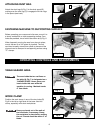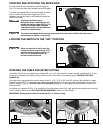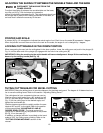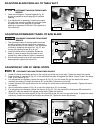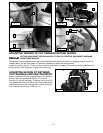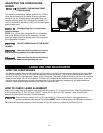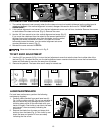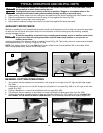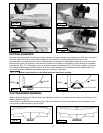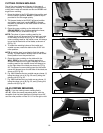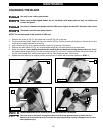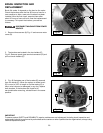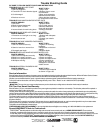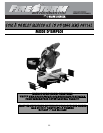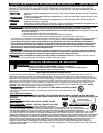
16
TYPICAL OPERATIONS AND HELPFUL HINTS
If the workpiece causes your hand to be in the hazard zone within 6” of the saw blade, clamp
the workpiece in place before making the cut.
Cuttinghead must return quickly to the full up position. Sluggish or incomplete return of the
cuttinghead will effect lower guard operation possibly resulting in personal injury.
1. Before cutting, make certain that the cutting arm and table are at the correct settings and firmly locked in place.
2. Place the workpiece on the table and hold or clamp it firmly against the fence (Fig. 28).
3. For best results, cut at a slow, even cutting rate.
4. Never attempt freehand cutting (wood that is not held firmly against the fence and table).
Fig. 28
A
AUXILIARY WOOD FENCE
Multiple or repetitive cut-off operations that result in small cut-off pieces (one inch or less) can cause the saw blade
to catch the cut-off pieces and project them out of the machine or into the blade guard and housing, possibly
causing damage or injury.
To limit the possibility of personal injury or blade guard damage, mount an auxiliary wood fence
on your saw. Keep the cutting head down until the blade stops whether or not you use an
auxiliary wood fence.
Holes are provided in the fence to attach an auxiliary fence (A) Fig. 29. This auxiliary fence is constructed of straight
wood approximately 1/2" thick by 3" high by 20" long.
NOTE: The auxiliary fence (A) is used ONLY with the saw blade in the 0° bevel position (90° to the table). When
bevel cutting (blade tilted), remove the auxiliary fence.
Fig. 29
A
A
GENERAL CUTTING OPERATIONS
Fig. 30A Fig. 30B
1. Your machine has the capacity to cut standard 2 x 4’s lying flat or on edge, at the 45° right and left miter angles
(Fig. 30A).
2. A standard 2 x 6 can be cut in the 90° straight cut-off position in one pass (Fig. 30B) or at 45° right or left miter
angles (Fig. 30C).
3. Cutting a standard 4 x 4 can be accomplished with one pass (Fig. 30D).
4. This machine has the capacity to accurately cut crown moldings and other bevel-type cuts (Fig. 30E).
5. Cutting various sizes of plastic pipe is an easy job with this machine (Fig. 30F). Material must be CLAMPED OR
HELD FIRMLY TO THE FENCE TO KEEP IT FROM ROLLING.
This is extremely important when making angle cuts.



